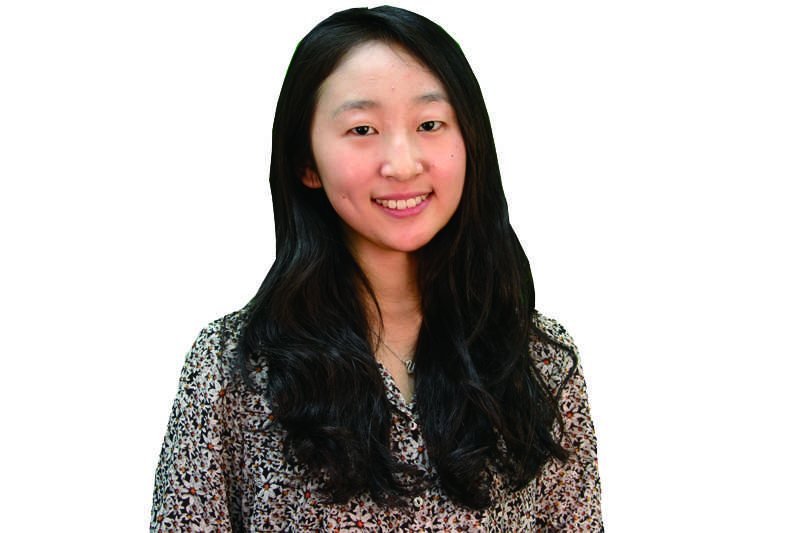Since looking at Georgia O’Keeffe’s “Blue and Green Music,” a 23-by-18 inch oil on canvas, this past Friday at the Art Institute of Chicago, modes of expression, artistic or otherwise, have been on my mind.
Between the different streaks of dark indigo, light and dark green and purple in O’Keeffe’s work were swirly ghost-like shapes that also looked like cabbages sliced in half. In the bottom left corner were some ripples of different shades of green, which to me looked like seaweed.
What was really interesting was learning the context. Inspired by Wassily Kandinsky’s theory that “visual artists should emulate music in order to achieve pure expression free of literary references,” according to the description next to the painting, O’Keeffe translated a piece of music into the painting I was looking at. As she later recalled, she explored “the idea that music could be translated into something for the eye.”
But one of the perhaps less elegant 21st century versions of “expression” found in our daily lives may be emoticons.
Emoticons, in a way, are modes of expression “free of literary references.” Whether they are a “pure” expression is debatable. Our emotions are translated into icons. We express ourselves through texts or posts online with “something for the eye,” or more like something for everyone’s eyes.
We use emoticons to express our emotions. These icons differ from place to place. For instance, :), :(, :D, :S, :P, :/ and so forth may be seen frequently in the West, whereas ^^ or ^-^ (smile), *-* (surprised), -_- (annoyed), T-T (crying) or ^^; (embarrassed) are seen often in the East.
This made me question: Are emoticons art? Or could they be modes that become art?
Then I thought of “The Medium Is the Message,” written by 20th century philosopher of communications Marshall McLuhan, as a possible link between the two ideas. McLuhan argues that “the ‘message’ of any medium or technology is the change of scale or pace or pattern that it introduces into human affairs,” and that “It is the medium that shapes and controls the scale and form of human association and action.”
Although his examples are more related to the Industrial Revolution, what he says about them can be extended to contemporary technology and new forms of expression — including emoticons. I always thought that what defines art is the ability to express something — be it feelings, opinions, observations. Different mediums can equally express a feeling or a thought, whether through visual, auditory or performance arts.
Emoticons are a new medium. They change the pace and patterns of expressing our emotions. Anyone receiving a text or looking through Facebook or other social media can see and interpret them immediately. Sometimes in real life, people’s expressions are hard to read because they may be putting on a poker face or simply having multiple feelings about something or some situation. We have to take multiple factors into consideration to read those faces. But now emoticon users, at least those within the same region, have agreed upon defining exactly what emoticons mean, and there is no need to interpret these expressions of emotions anymore. It is simply read and understood the minute it is uploaded or sent.
Medium, by definition, is not necessarily art. But the creation of the medium, in a broader sense, can be. Coming up with a new system of communicating, in a broader sense of art, is art. Alphabets and other writing systems are creative works that allow expression of multiple things. Language art is the creative combination or use of a writing system. In the same way, emoticons have allowed a new, creative way of interacting with the developing technology of the contemporary era and expressing ourselves. So the creation of emoticons and creative use of emoticons can be art, too. There are many emoticon arts where the shapes or colors of the emoticons can be used to create a bigger picture. Here, the emoticons are dissociated from the original emotions they represented.
We are constantly finding new connections and disconnecting them and reconnecting to new ideas and forms, and that is beautiful.
Heiwon Shin is a Medill freshman. She can be contacted at heiwonshin2017@u.northwestern.edu. If you would like to respond publicly to this column, send a Letter to the Editor to opinion@dailynorthwestern.com.














